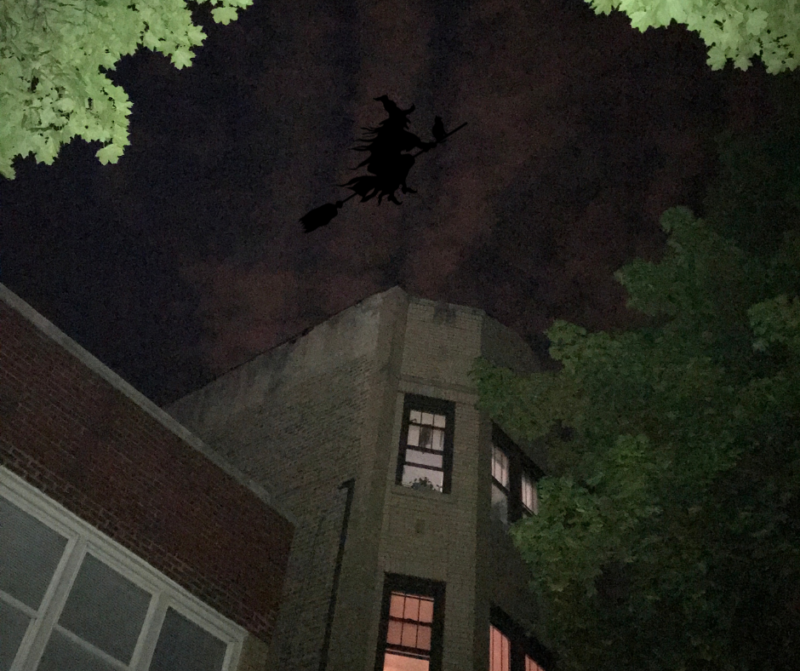GODS AND MONSTERS: THE WITCH
Eve Volungeviciute

As we make our way down the nearly infinite list of gods, monsters, and other entities, we are now onto witches. Unlike quite a few others we have previously explored, witches are more of a historical phenomenon as well as a literary one. In this piece, we’re discussing what being a witch meant back in the day and how that now translates into modern media. Let’s begin!
Concept of witchcraft
Beliefs in witchcraft and its existence are prevalent throughout recorded history. Despite this, there is a certain difficulty in giving the term a proper definition across different cultures, although one could consider this contradictory since the most common meaning is the usage of harmful magic. Most societies had a fear that some individuals were able to cause them harm through supernatural means. Some historians have suggested ‘witchcraft’ was the way for people to explain their misfortunes.
The common belief was that witches used objects, words, and gestures to cause supernatural harm to others while some had an innate power to do so. Most cultures, apart from Africa and Melanesia, agreed that witchcraft was a wilful act and there were no outside forces. Curses and spells were the usual forms of inflicting said harm; however, potions and poisons were also quite common. It’s worth mentioning people also believed that witches worshipped the Devil and he was the one to grant them their powers. This was perceived as a religious crime.
The most common kind of misfortune, at least in Europe, was illness and death of adults, children and their animals. One could argue that people not understanding sickness very well in general contributed to this belief. An illness now known as postpartum psychosis was also then interpreted as witchcraft, with North America exhibiting a more complex belief system when it came to this.
As a juxtaposition to dark magic, people also believed in helpful magic, or ‘white magic’ as they started calling it. Although not orthodox, this type of magic was welcomed in the society. Indigenous societies especially nurtured this way of thinking by practically worshipping their healers.
Protection measures
As one would imagine, people were seeking out ways to protect themselves against evil magic. These measures included, but were not limited to, charms, talismans and amulets. Some would bury horse heads inside the walls of their houses. Alleged witches were also tortured and murdered, as that was thought to be a sure way to get rid of any curses.
Accusations and trials
Speaking of witchcraft accusations, these were often related to social and economic tensions across different countries. In most cases females were the ones on trial, although in some cultures men were also chosen. Age factor was wide, with some cultures focusing on adolescents while some would shift their attention to the elderly and others attacked every age group.
The women accused also did not look anything like the Halloween costumes we wear nowadays (although that goes without saying) and they also weren’t poor or destitute. They were often servants, wives of artisans or tenant farmers. Historical records state that most of those suspected to participate in witchcraft were perfectly normal law-abiding citizens with only a few already labelled as ‘troublemakers’.
Reasons for witchcraft accusations would fall under four various categories. One would be the person being caught in the act of sorcery, whether positive or negative. Another cause would be a white magic practitioner losing the trust of their clients. The third reason was nothing more than a person falling out of favour with their neighbours. This ties into the fourth category and the implication that once your village thought you were a witch, there wasn’t much one could do to convince them otherwise and you were essentially doomed.

Spanish inquisitors thought witchcraft was a problem that could be solved by confession, once again putting a religious undertone behind the entire ordeal. We cannot talk about witch trials without mentioning Salem (Massachusetts, USA). What has now become a tourist attraction was once a murdering ground for young women purely because they would not adhere to puritan beliefs. The entire horrific ordeal deserves its own article but as far as it stands when it comes to the witch mythos, the trials are mentioned a lot throughout witch media of modern times, but more on that in the next part.
Depiction of witches in fiction throughout history
Although witches have a long history of being portrayed in various forms of art, it mostly originates in Europe, especially during the Medieval and Renaissance periods. Scholars claim that is due to the popularity of demonology-centred literary works.
The legends of King Arthur start by portraying Morgana as a benign witch, primarily there to be Arthur’s healer. It’s not until 13th century that this image gets twisted into something more threatening as she becomes Merlin’s apprentice. Her portrayal in BBC’s 2008 TV show of the same name follows the pattern – she starts out as living with Arthur and Uther as their honorary family member and then slowly morphs into a dark force who becomes the primary villain. Whether or not it could’ve been prevented by keeping Morgana more in the light of what being a witch really means, it’s irrelevant in the context as she is treated like a villain throughout the series with no ambiguity.
Hansel and Gretel, a classic fairytale, is one of the first depictions of a witch as a villain figure in fiction. The story showcases a witch who eats children unlucky enough to find her cabin, until the titular pair of siblings outsmart her. The original Snow White also has a murderous magician as its main antagonist. She meets her bitter end after she’s enchanted to dance in red-iron hot shoes for eternity.
There are more examples of Brothers Grimm’s fairytales but ultimately, they all come down to the same characteristics and conclusions – the witch is deemed a villain, and the only acceptable punishment is a violent injury or death. Other works which follow this take on the witch phenomenon are the White Witch from C. S. Lewis’s The Lion, the Witch and the Wardrobe as well as the Grand High Witch from The Witches by Roald Dahl.
A more positive angle on witch portrayal can be attributed to female liberation movement in the twentieth century. Stella Benson’s Living Alone is about the ‘musings of a female witch who is an anarchic force to middle-class Londoners’. The woman’s non-harmful magic is meant to shake women out of complacency and normality of their time. This was meant to be a drastic change from the tortured illustrations in early nineteenth-century literature. Some more mainstream examples of good witches in the media are Glinda from The Wonderful Wizard of Oz and Hermione Granger from the Harry Potter series.
The 1990s also witnessed a resurgence in popularity of the trope, with a variety of movies and TV shows centred on them. One of the more mainstream examples include The Craft, which explores the darker side of female friendships with spells and potions acting as a nice backdrop. Hocus Pocus is a Halloween classic at this point, unafraid to portray the Sanderson sisters as delightfully wicked. There is also Sabrina the Teenage Witch and Charmed, both shows focusing on a family of witches, the former taking a light-hearted approach while the latter dwelling into the drama more (despite still being family friendly). Of course, I have to mention Buffy the Vampire Slayer due to one of the main characters being a witch, which becomes quite a big storyline in the later seasons.
More recent examples are also darker, such as the Coven season of American Horror Story that explores a darker side of witchcraft (please do check trigger warnings if you are interested, as this show is not for everyone). For comic book fans, Wanda aka Scarlet Witch from Marvel universe is a more villainous witch depiction.
